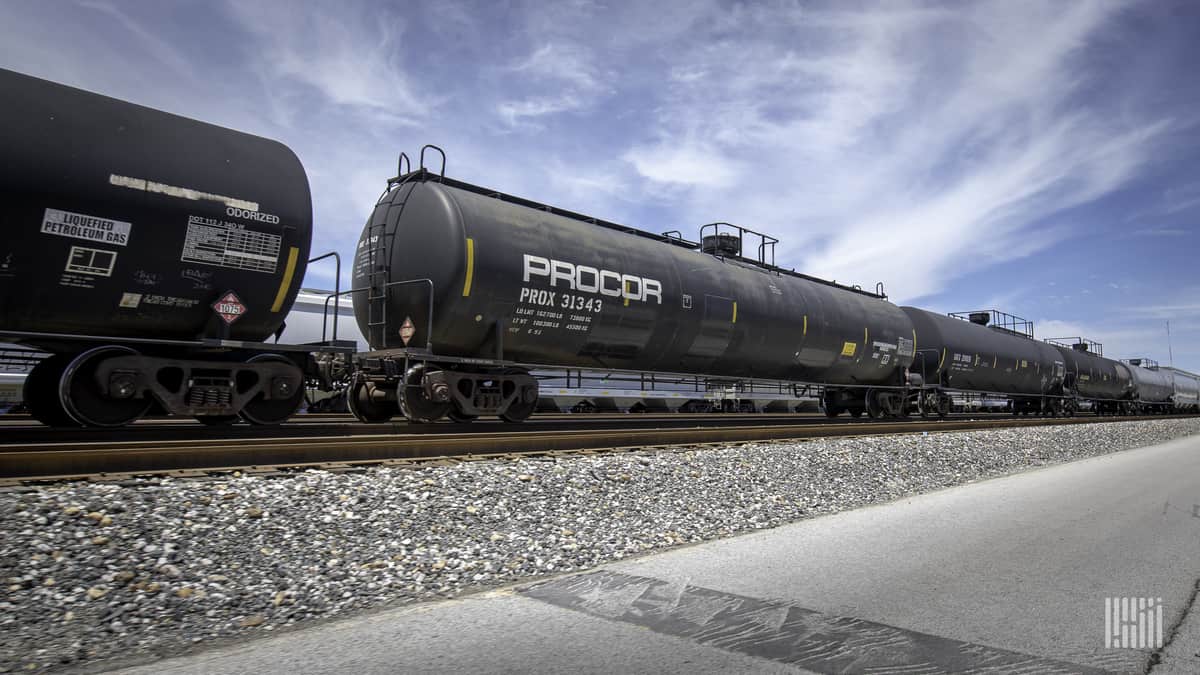Despite having locomotives in storage and personnel furloughed earlier this year due to the COVID-19 pandemic, U.S. freight railroads have been able to bring back resources and meet the needs for rail service so far this harvest season, shippers said at a biennial meeting of the Rail Energy Transportation Advisory Committee (RETAC), an advisory panel to the Surface Transportation Board (STB) that includes both railroads and shippers as members.
Grain shippers had expressed concern recently on whether network capacity would be sufficient to meet the needs of the U.S. harvest season. But shippers at the committee meeting Wednesday said rail service has been “running well” as railroads add sufficient amounts of power and crews to meet demand.
“Things from my perspective are moving OK,” said Brad Hildebrand, vice president and global rail and barge lead at Cargill. Hildebrand also said there were some rail service hiccups in the Pacific Northwest recently that have since resolved.
The need for adequate rail service comes as U.S. corn production this 2020-2021 crop year could be an estimated 14.9 billion bushels, which would be the second-highest total on record, Hildebrand said. Furthermore, export competitors such as Ukraine and Russia and South America are facing or could face unfavorable crop conditions. This would make U.S. corn exports more competitive globally, he said.
Indeed, U.S. grain carloads for the week that ended Saturday were up nearly 35% to 26,354 compared with the same period a year ago, according to data from the Association of American Railroads. Meanwhile, September grain carloads were up nearly 28% to 25,705, and they represented about 21% of overall U.S. carload traffic for the month.
Despite the increase in grain activity, overall demand for railcars is still down, and recovery for the railcar manufacturing market isn’t likely to occur until 2022, according to Bob Hulick, executive vice president at Trinity Industries (NYSE: TRN).
Some railcar types, such as tank cars and hopper cars for grain and plastics, could see some demand, while other car types, such as small cube covered hoppers, might not recover. Because of an anticipated lack of demand for small cube covered hoppers, railcar manufacturers are considering ways to redeploy them, Hulick said. This could mean “re-bodying” some small cube covered hoppers and changing their size, he said.
With some energy commodities, such as coal, facing systemic declines, utilities shippers are looking at what kind of rail service data they should collect that would best serve both the railroads and shippers, according to the presentation by Emily Regis, fuels services manager for the Arizona Electric Power Collective.
As part of a utilities’ update for the committee meeting, Regis shared the results of a voluntary survey conducted among 22 power plants that still operate coal-fired units. The survey looked at factors related to the on-time performance of the Class I railroads and multiline and short line movements. The factors helped to determine the average annual transit time of various Class I railroads.
The best results for service occur when the trains arrive at customers’ facilities neither too early nor too late, Regis said.
“I would say that consistency is always appreciated on both sides,” Regis said.
RETAC committee co-chair George Duggan, as a representative of the freight railroads, said the railroads have been trying to work hard with customers to meet service needs, even as different customers — such as grain and frac sand — having vastly different needs.
“America’s freight railroads are by and large running smoothly,” Duggan said. He is also group vice president for the coal business group at BNSF (NYSE: BRK).
Duggan stressed open communication between the shippers and railroads so that the railroads can use shippers’ projected forecasts to prepare for service demands. This strategy suits both short- and long-term needs, including situations where furloughed workers might not return to work, Duggan said, answering a question about what the railroads will do should they encounter a workforce shortage.
‘We’ll continue to put together shorter-term and longer-term plans based on the forecasts you guys give us,” Duggan said.
RETAC meets biennially, and members provide updates on the oil, railcar, ethanol/biofuel, utility, mine and railroad sectors. STB members also participate and can ask questions. Meeting presentations are available on STB’s website.
STB member Patrick Fuchs said the board will continue to monitor pandemic-related issues in the months ahead.
“We’re keeping the lines of communication open, and we’re here to help in any way we can,” Fuchs said.
Click here for more FreightWaves articles by Joanna Marsh.
Related articles:
Surface Transportation Board seeks input on class exemption methods
Grain shippers brace for tight rail market
Surface Transportation Board adopts rule to improve data collected from freight railroads










